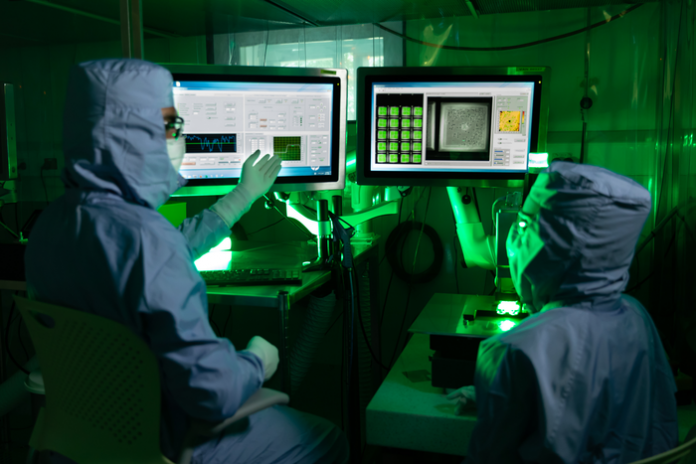The University of Queensland is creating a COVID vaccine patch, which can protect against the virus – without the use of a needle
The “clickable” patch is yet another COVID vaccine in development.
But, unlike traditional methods which use needles to inject the vaccine, this is a new kind of vaccine technology. While the Merck “COVID pill” is well-known and the concept of intranasal vaccines is relatively tangible, this is the first type of vaccine that barely makes contact with the human body. It isn’t eaten, inhaled, or injected.
How does the vaccine patch work?
This vaccine candidate, created in a collaboration between The University of Texas, University of Queensland and Vaxxas, uses a high-density microarray patch (HD-MAP) to provide immune protection against COVID-19.
The applicator is “clicked” over the skin, where it does not break the surface.
Dr David Muller, from UQ’s School of Chemistry and Molecular Biosciences, said: “And it’s much more user-friendly than a needle – you simply ‘click’ an applicator on the skin, and 5000 microscopic projections almost-imperceptibly deliver vaccine into the skin.”
According to early tests on mice, the vaccine patch seems to be working well to create an immune response that will be able to handle COVID. However, the vaccine needs to be taken to clinical trial stage to pin down specifics, like percentages of protection.
Dr Muller further said: “It also neutralises multiple variants, including the UK and South Africa variants.”
How many doses are necessary?
According to the team of scientists, the vaccine would be applied once.
A one dose vaccine would make it significantly easier for countries without access to get vaccinated – as two doses create an extra cost. Even the Merck pill, billed as cheaper than injectable vaccines, requires a five day course similar to an anti-biotic. The timeframe may not be functional for people in the most vulnerable communities in the world.
Dr Muller also commented that: “We’ve shown this vaccine, when dry-coated on a patch, is stable for at least 30 days at 25 degrees Celsius and one week at 40 degrees, so it doesn’t have the cold chain requirements of some of the current options.”
The cold supply chain, necessary for vaccines such as Pfizer, Moderna and AstraZeneca, is another key obstacle for vaccine equity across the world. Some countries do not have the infrastructure for cold transport.
The vaccine is in early development stages, as it has yet to be taken to clinical trial stage. However, the results gathered by scientists so far are decidedly hopeful.












Are these new vaccines eligible for FDA’s emergency use authorization or is this still years away?